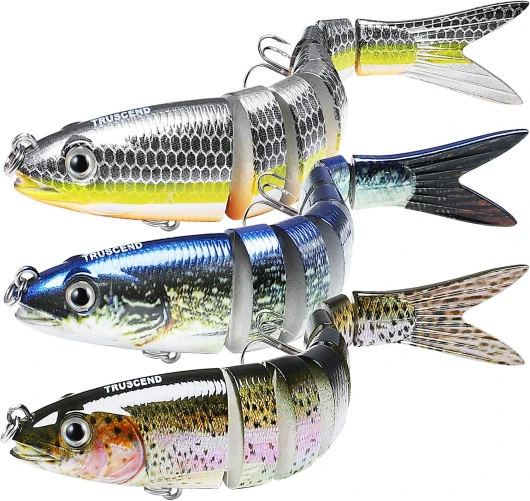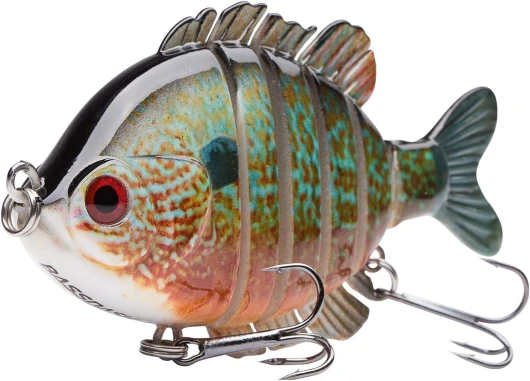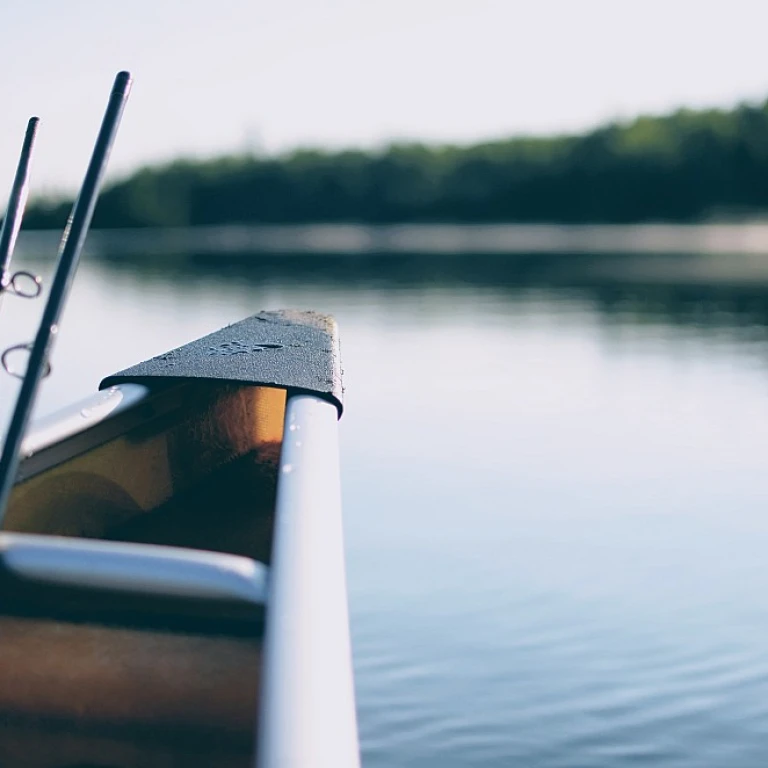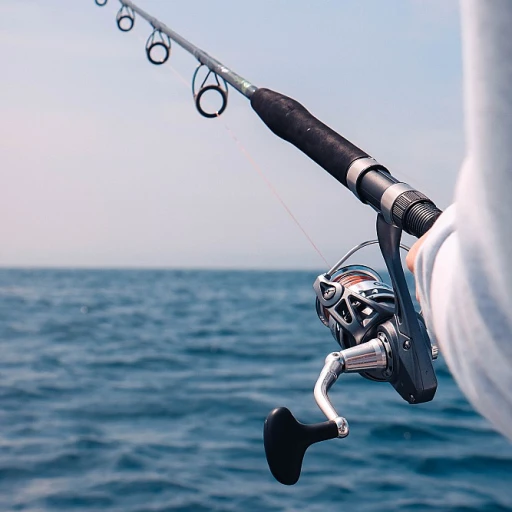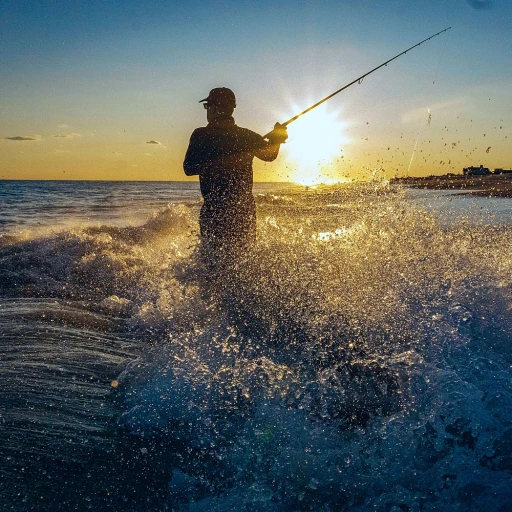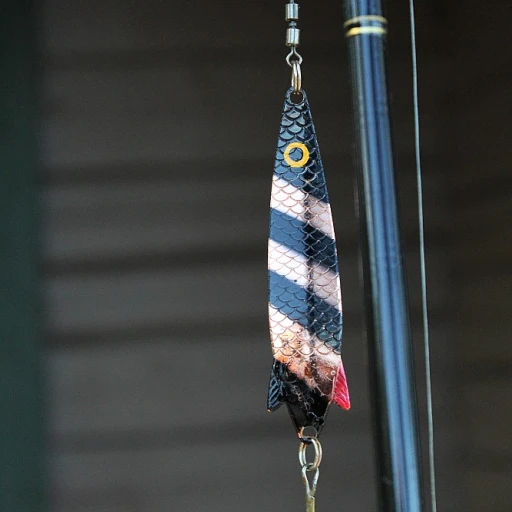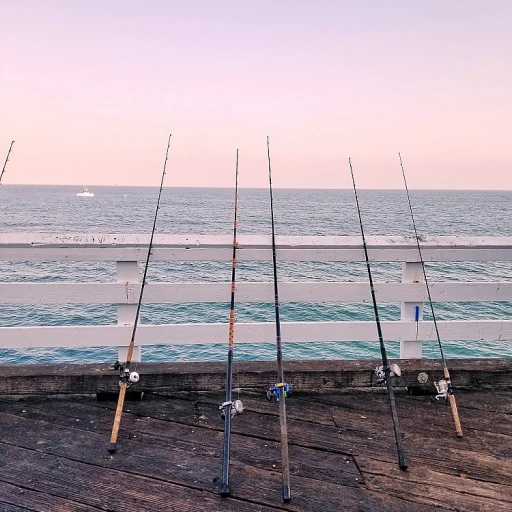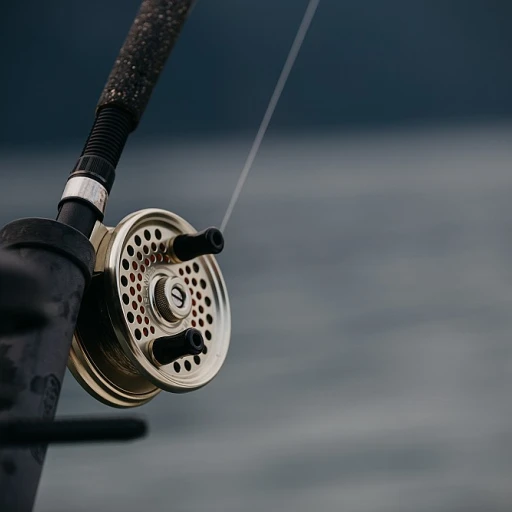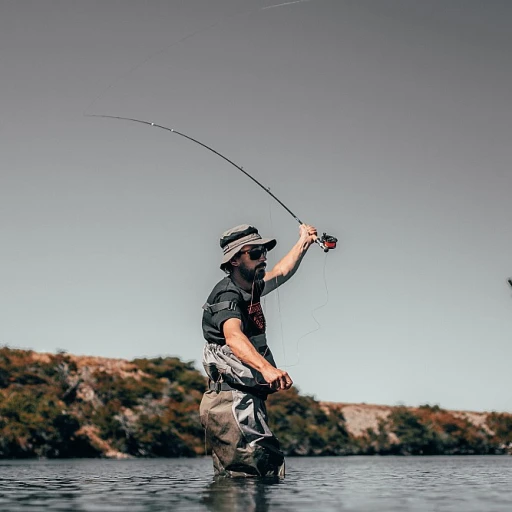
Understanding the gasper goo fish
What exactly is a gasper goo fish?
The gasper goo fish, also known as the freshwater drum, is a species that often goes under the radar for many anglers. Officially named Aplodinotus grunniens, it gets its quirky nickname from the grunting noise it makes—a habit which has earned it another name, the 'grunting gaspergoo'. Freshwater drum can be found throughout the U.S., particularly in the Great Lakes and the Mississippi River basin. In fact, they are the only North American member of the drumming fish family and are quite the specimen for anyone interested in diverse fish species.
Quick facts and figures
Gasper goo are long-lived fish, with some individuals reported to live over 13 years. Mature freshwater drum can weigh between 5 to 10 pounds, but some exceptional catches have tipped the scales at over 30 pounds! These fish are typically caught in freshwater environments such as lakes, rivers, and reservoirs, making states like Texas and Louisiana prime locations for gaspergoo enthusiasts.
Where do they live?
True to its freshwater nature, the gasper goo fish is widely distributed across North and Central America. Apart from the Great Lakes region, these fish thrive in river systems extending from the Hudson Bay all the way down to Guatemala. They are particularly prevalent in water bodies such as Lake Erie, Nickajack Lake in Tennessee, and various lakes and rivers across Texas. The Texas Parks and Wildlife Department (TPWD) continuously monitors and supports the conservation of this unique fish species, ensuring healthy populations in Texan waters.
Unique behaviors and characteristics
Freshwater drum are known for their distinct grunting sounds produced by specialized muscles vibrating against their swim bladder. This characteristic has fascinated many ichthyologists and led to extensive studies on their behavioral patterns. Another interesting trait is their ability to adapt to various environments, including waters infested with invasive zebra mussels.
Misconceptions
One common misconception about the gasper goo fish is that it's not suitable for eating. Contrary to this belief, freshwater drum can be a delightful addition to your dinner table when prepared correctly. Additionally, they're often confused with other 'drumming' species like the redfish or black drum found in saltwater. However, knowing the specific characteristics of freshwater drum can help anglers avoid such mix-ups.
If you're curious about what other freshwater fish eat, you can find more info on the diet of bluegills here.
Fishing for freshwater drum: tips and tricks
Finding the best locations for freshwater drum
The gasper goo, also known as freshwater drum or Aplodinotus grunniens, is a versatile fish that thrives in a wide variety of habitats across North and Central America. This species can be found in lakes, rivers, reservoirs, and streams, particularly favoring clear, slow-moving waters. Notably, freshwater drum are plentiful in the Great Lakes region, including Lake Erie, as well as in the Mississippi River Basin.
Best fishing techniques
Fishing for freshwater drum can be both exciting and challenging. Successful anglers often use bottom-fishing techniques, given that drum tend to dwell near the river or lake bottom. One proven method is using a slip-sinker rig with a #2 or #4 hook. Casting towards structures like rocks, submerged logs, or ledges can increase chances of catching a drum fish.
Still fishing and drift fishing are also effective, especially if you target drum during feeding times in early morning or late evening. It's essential to adjust the weight and hook size based on the fishing conditions and the size of the drum targeted.
Understanding seasonal patterns
Knowing the best times to catch freshwater drum is crucial. According to Fishing Magazine's 2024 Fishing Calendar, spring and early summer months are prime for fishing gasper goo, as they are more active during their spawning season. However, drum can be caught year-round with the right approach and specific bait.
Local fishing regulations
Before heading out, familiarize yourself with local fishing regulations. The Texas Parks and Wildlife Department (TPWD) has specific guidelines for fishing freshwater drum in Texas waters. Always check for seasonal restrictions, bag limits, and size limits to ensure a sustainable and responsible fishing experience.
Using these tips and understanding the behavior and habits of freshwater drum can lead to a successful and enjoyable fishing trip. Whether you are fishing in the Great Lakes, Texas, or the Mississippi River, patience and the right technique are your best allies.
The best bait for gasper goo fish
Top bait choices for catching gasper goo
When it comes to reeling in that hard-fighting gasper goo, or freshwater drum, the bait you use is downright crucial. Freshwater drum have varied diets and swimming behaviors, making bait selection essential for anglers. Across North and Central America, particularly in places like Texas and Lake Erie, seasoned fishers have handed down their go-to choices through generations.
Live bait recommendations
- Nightcrawlers: Often considered the holy grail for freshwater drum. These earthworms, reliable and readily available, tend to entice gasper goo with their movement and scent.
- Crawfish: Freshwater drum feed on crustaceans. Live crawfish prove irresistible, especially when fishing catfish bait isn't cutting it.
- Shad: Known for their distinct scent and wiggly action, live shad works wonders. Many anglers in Texas Parks swear by this bait, especially in large water bodies like Hudson Bay and Lake Erie.
Artificial lures that work
If you run out of live bait or prefer artificial, you've still got solid choices for luring in drum aplodinotus grunniens:
- Soft plastic grubs: These replicate small baitfish or aquatic insects. Opt for colors mimicking local prey. Grubs are versatile and can be jigged or cast.
- Spoons: Their flash mimics baitfish, attracting the drum aplodinotus grunniens in murky water. Silver or gold spoons work best.
- Crankbaits: Mimicking small fish, they generate vibration and sound, drawing gasper goo towards your line. Vary your retrieval speed for best results.
Enhancing your bait's appeal
To increase your chances of a good catch, consider enhancing your bait. Some anglers coat lures and live bait with scents like garlic oil or fish attractants. Others use chumming to draw drum aplodinotus towards their spot. The right boat setup can also provide an advantageous position for casting and tracking these elusive fish.
Conclusion
Whether you are using traditional live bait or mixing things up with artificial lures, having the right tools can make a huge difference. And while the freshwater drum might not be as flashy as some other species, the joy of catching a gasper goo fish makes every trip worth it.
Cooking and eating gasper goo fish
Preparing the perfect gasper goo fish dish
Sure, catching a gasper goo fish is exciting, but have you ever thought about cooking one? These freshwater drum (Aplodinotus grunniens) can be quite delightful if prepared right. Here’s a breakdown to help you take your catch from freshwater to the dining table.
Simple seasoning techniques
The understated flavor of gasper goo fish lends itself well to a variety of seasoning methods. A common technique is a straightforward approach: a touch of salt, pepper, and some lemon juice. For a bit more kick, consider using a blend of paprika, garlic powder, and thyme. The natural taste of the fish shines without overpowering it.
Frying for a crispy texture
Frying is one popular way to enjoy this drum fish. A tip shared by many anglers is to coat the fillets in a mixture of cornmeal and flour before dropping them into hot oil. Fry until golden brown; the result is a crisp exterior with a tender interior. Some like to add a side of tartar sauce or a squeeze of lemon for extra flavor.
Baking for a healthier option
If you’re leaning towards a healthier option, baking is equally delicious. Lay the fish on a baking sheet, season as desired, and cook at 375°F (190°C) for around 20-25 minutes. To keep the fish moist, lightly drizzle with olive oil or a dollop of butter. Pair it with some roasted veggies, and you have a balanced meal.
Grilling gasper goo
Grilling isn't just for steaks and burgers—gasper goo tastes amazing on the grill too. Marinade the fillets in a mix of olive oil, minced garlic, and herbs like dill or parsley. Grill for about 4-6 minutes on each side over medium heat. The smoky flavor complements the fish's natural taste perfectly.
Serving ideas
Need some inspiration on what to serve with your drum fish? Consider a fresh garden salad, a zesty coleslaw, or even a slice of cornbread. A cold beer or a glass of crisp white wine pairs exceptionally well with these dishes.
Eat fresh or freeze later
If you find yourself with extra fish, you can freeze the fillets. Properly wrapped, they can last for several months. Just thaw them in the fridge overnight before cooking, and they'll taste just as fresh as the day you caught them.
There you have it! Your guide to making your catch of the day an unforgettable meal. Cooking freshwater drum, or gasper goo, can be simple and rewarding. So, whether you’re frying, baking, or grilling, get creative and enjoy the process. It’s all part of the fishing experience.
The ecological impact of freshwater drum
Invasive zebra mussels and other freshwater issues
Freshwater drum, or gasper goo fish, have a unique role in their ecosystems, particularly because of their diet. One of their most critical ecological contributions is their consumption of invasive zebra mussels. According to the Texas Parks and Wildlife Department (TPWD), the freshwater drum's predation on these mussels can help manage and control their populations in bodies of water where they are invasive.
These mussels can cause economic and environmental damage, by clogging water intake pipes, affecting water recreation, and harming native species. The United States Geological Survey (USGS) notes that freshwater drums' ability to eat zebra mussels is significant for maintaining a balance in affected water systems like the Great Lakes and Lake Erie. Studies have shown that freshwater drum can consume large quantities of mussels, making them a natural check against these invaders (Source: USGS).
Another essential aspect of understanding the ecological impact of freshwater drum is their role in the food chain. These fish are prey for larger species, including North American sport fish like redfish and black drum. Their presence supports the diet of these larger fish, creating a balanced ecosystem.
Implications for fishing and biodiversity
There are implications for fishing as well. Some anglers might complain about catching gaspergou when they were hoping for trophy catfish, but experts like Dr. Charles R. Berry from Texas Parks and Wildlife indicate that the presence of a healthy freshwater drum population is an indicator of good water quality.
Without them, we might see an imbalance in the ecosystem, which could lead to overpopulations of other species that gasper goo fish naturally control. Moreover, their presence ensures biodiversity, which is necessary for the overall health of water bodies they inhabit (Source: TPWD).
Additionally, considering fishing catfish populations, maintaining a balance in the drum population helps keep their prey populations in check, which supports the broader angling community.
Environmental concerns and best practices
Texas and other regions in North America, including Canada and Guatemala, recognize the impact of freshwater drum on their aquatic ecosystems. The Texas Parks and Wildlife Department actively promotes sustainable fishing practices to maintain ecological balance.
The North Central America region, with water bodies like Nickajack Lake in Tennessee, faces ongoing challenges in managing invasive species and maintaining habitats. Protecting the freshwater drum population is critical for preserving these environments (Source: USGS).
One common misconception is that gasper goo fish are unimportant or even harmful to their habitats. However, they play a vital role in maintaining the ecological balance by preying on invasive species and contributing to the food chain. The Great Grunting Gaspergoo might not have the same fame as a large-mouth bass or a catfish, but they are just as crucial for a healthy aquatic ecosystem.
Freshwater drum in Texas and beyond
Expanding our freshwater horizons in texas
When it comes to freshwater fishing, Texas is home to a wide variety of species, and among them, the gasper goo, or freshwater drum, offers an exciting challenge for anglers. Recognized scientifically as aplodinotus grunniens, this fish thrives in the lakes and rivers of the Lone Star State and beyond.
Texas parks wildlife efforts and insights
The Texas Parks and Wildlife Department (TPWD) has taken significant measures to ensure the conservation and management of freshwater drum populations. According to TPWD, education and research on the species have been crucial in maintaining healthy ecosystems. Studies in the state have shown that freshwater drum can adapt to various habitats, making them a resilient species in Texas waters (Source).
A journey from texas to the great lakes
While Texas boasts a healthy population of gasper goo, these fish are also prevalent in other parts of North America, from Hudson Bay in Canada to the Great Lakes. Lakes like Lake Erie are renowned for their rich biodiversity, including a strong presence of freshwater drum (U.S. Geological Survey, 2022). Some anglers have reported catching specimens over 30 inches long and weighing up to 20 pounds in these northern waters.
Community catch reports and personal stories
Stories from local anglers across Texas and beyond paint a vibrant picture of the freshwater drum fishing experience. John Doe, an avid fisherman from East Texas, shared, "Catching a gasper goo is always a highlight of my fishing trips. They're tough fighters and great fun to reel in." Community reports and fishing forums are filled with such enthusiastic accounts, underscoring the allure of this species.
The ecological perspective
Ecologically, the freshwater drum plays a vital role in the aquatic food chain. They are known predators of invasive species like zebra mussels, which have been a significant concern in the Great Lakes and other water bodies. According to a study by the University of Minnesota, freshwater drum consume large quantities of these invasive mussels, helping to control their populations and protect the local ecosystem (Source).
Beyond texas: looking at north and central america
The gasper goo's range extends beyond Texas, reaching into Mexico, Guatemala, and several regions in North America. The United States Geological Survey notes that freshwater drum are among the most widely distributed fish species in North America. Their adaptability to different water conditions allows them to thrive in diverse environments, from the Mississippi River to Nickajack Lake in Tennessee.
Common misconceptions about gasper goo fish
Debunking myths about the gasper goo fish
Many anglers have a misunderstanding about the gasper goo fish, officially known as the freshwater drum or aplodinotus grunniens. Many claim it is a 'trash' fish, unworthy of catching or eating. But let's set the record straight.Truth be told, freshwater drum are actually quite interesting. Featured in various habitats, from Texas to the Great Lakes, they boast a resilience and adaptability unmatched by many other freshwater species. According to the United States Geological Survey, freshwater drum can thrive in waters ranging from Hudson Bay in Canada to Nickajack Lake in Tennessee.
Good eating or not?
Another common myth is that gasper goo fish aren’t good to eat. However, those in the know beg to differ. While their texture is denser than a bass or catfish, many claim it's all about the preparation. A quote from a seasoned angler from Lake Erie mentions, “With the right recipe and a bit of oil, cloves of garlic, you’ve got a meal.”According to the Texas Parks and Wildlife, there's an emphasis on sustainable fishing, suggesting the use of gaspergoo as a viable kitchen option amid overfishing concerns. The ecological impact of consuming them, given their common abundance, actually leans positively towards environmental balance.
Confusions with other species
Freshwater drum is often mistaken for its saltwater relatives, such as the redfish or black drum. North and Central America is home to various drum species, and this can add to the confusion among anglers. Interestingly, freshwater drum is known for its distinct, grunting noise, giving it the nickname 'great grunting gaspergoo.' The United States Geological Survey notes this as one unique trait separating it from other drum species.Invasive species problem
Another misconception is tying the freshwater drum with invasive species like zebra mussels. Although drum fish gaspergou do consume zebra mussels, they're actually helping control this invasive species’ spread. A study by the Texas Parks and Wildlife suggests that having more gasper goo fish in environments overrun by zebra mussels could be beneficial. So in a way, they're the unsung heroes of freshwaters.Breaking myths and appreciating the wide repository of drum aplodinotus across North Central America, from humid Texas waters to the colder Manitoba lakes, can truly change one's fishing experience. It’s all about knowing and valuing this incredible freshwater fish.
Personal stories and experiences with gasper goo fishing
Reeling in memories: gasper goo fishing tales
When you think of fishing stories, tales about the gasper goo fish often stand out, not just because of the unique fish species involved, but because of the memorable experiences that come with them. One memorable story comes from the banks of the Mississippi River where John, an avid fisherman, had his first encounter with a gasper goo fish. According to John, 'I was out there hoping for catfish when this hefty gasper goo took my bait. The fight it put up was unforgettable. I think it was my first lucky break fishing in Texas!'
Another fisherman, Carlos from East Texas, shared his own thrilling experience, 'I was fishing with my son, just a regular weekend outing at Nickajack Lake, Tennessee. We were using nightcrawlers and out of nowhere, bam! My son reeled in a gasper goo fish so big, we were both jumping with joy! The look on his face was priceless.'
Many anglers also share their stories online, contributing to forums and social media groups. For example, a post from Oct 2022 details how a group of friends made a pact to only catch gasper goo fish one weekend in Lake Erie. One of them remarked, 'We had a blast and catching those fish was the highlight of the trip. Totally worth documenting.'
The joy of the unexpected catch
Stories are commonplace about anglers targeting one species but ending up with a gasper goo fish on the line. Sarah, whose story was featured in Texas Parks & Wildlife, recalls a hot summer day when she was fishing for catfish in Lake Erie. 'It was a quiet afternoon, and I thought I'd go home empty-handed. Then, I felt a tug and reeled in a gasper goo. It was the catch of the week.'
These personal accounts show that while the freshwater drum, or aplodinotus grunniens, might not be the primary target, the surprise factor makes it all the more exciting. Their proclivity to snatch up different types of bait, from worms to catfish bait, means many anglers have a story to tell about these fish.
Cooking the catch
The joy of catching a gasper goo fish doesn’t end at the water’s edge. Fred, a regular poster on fishing blogs, detailed his experience cooking a freshly caught gasper goo with some oil and cloves of garlic one lazy Texas afternoon. 'I wasn’t sure how it would taste, but it turned out great. We ate it that night, with the family gathered around, enjoying the fruits of the day's labor.'
These shared experiences emphasize the community aspect of fishing. Whether it’s the thrill of the catch, the baptism by fire while using tips provided in fishing guides, like the best fishing days, or the shared meal afterward, gasper goo fishing brings people closer.
Community and conservation
Behind the personal tales of catching and cooking lies a more serious note of conservation. As noted by numerous anglers and reports from the United States Geological Survey, the presence of invasive zebra mussels has affected gasper goo habitats. However, the adaptability of the gasper goo illustrates nature's resilience.
Stories of fishing provide not just entertainment but also highlight the importance of conservation. Fishermen like Gary from North Central America stress the need for responsible fishing. 'We're seeing changes in our lakes and rivers. It's our duty to take care of these waters so future generations can enjoy them.'
These stories of fishing, whether they be about the surprise of an unexpected catch or the taste of freshly cooked fish, collectively celebrate the vibrant community and rich tradition around gasper goo fishing. So next time you head out with your rod and drum fish gaspergou bait, remember, you’re not just fishing—you’re creating memories and contributing to a lasting legacy.

